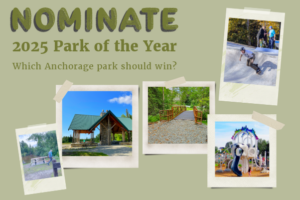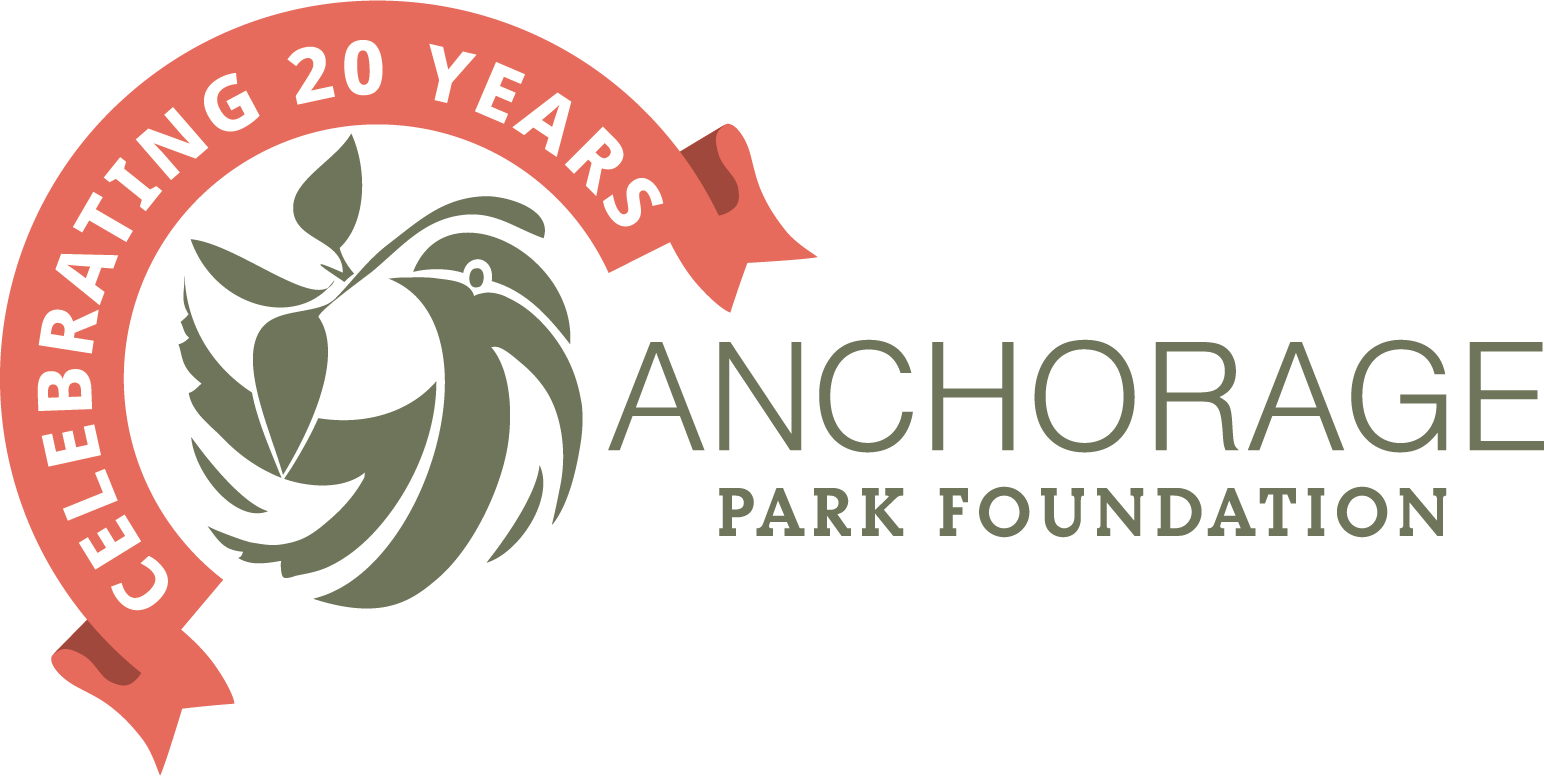Nominate Your Favorite Park Here
 Nominations for the Anchorage Park of the Year for 2025 are now open! Share which park in Anchorage holds a special place in your heart and deserves to be the 2025 Anchorage Park of the Year.
Nominations for the Anchorage Park of the Year for 2025 are now open! Share which park in Anchorage holds a special place in your heart and deserves to be the 2025 Anchorage Park of the Year.
The 2024 Anchorage Park of the Year is Kincaid Park, a favorite of locals and visitors alike. This year two new Indigenous Place Name markers were installed in the park and it was host to our first Parks+Trails Winter Activities Fair. To learn more about the history and happenings in Kincaid park, visit Park of the Year.
Ted Kincaid was selected to depict Kincaid park as he is the grandson of the homesteaders that the park is named for. Merch featuring Ted Kincaid’s view of Kincaid Park is available until the end of 2024 and all profits go towards improving parks and trails. Visit the store here.
The art for the 2025 Park of the Year will be revealed early 2025 and will feature the work of a local artist.

